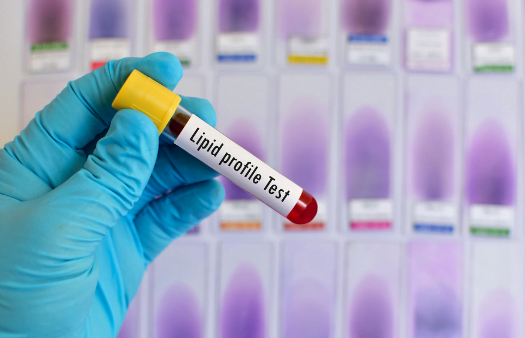Triglyceride Stability Testing in Animal Oils
The assessment of triglyceride stability is crucial in clinical and healthcare testing, particularly within the sector of cardiovascular and lipid profile testing. This service specifically targets animal oils used in various applications such as pharmaceuticals, food products, and nutritional supplements. The stability of triglycerides directly impacts product quality and safety, ensuring that these essential components remain effective throughout their shelf life.
Triglyceride stability testing involves evaluating how well the lipid molecules resist degradation under different environmental conditions. This is critical in healthcare because the integrity of triglycerides can influence drug delivery systems or the bioavailability of nutrients. In pharmaceuticals, for instance, a breakdown in triglyceride structure could lead to reduced efficacy or even toxic byproducts.
The testing process begins with proper sampling and preparation of the animal oil sample. It is essential that this step adheres strictly to ISO 15974 standards to ensure consistency across tests. Once prepared, the samples are subjected to a range of stress conditions, including temperature variations, light exposure, and oxidation-inducing agents like copper ions (as per ASTM D3276).
The primary goal is to simulate real-world storage and usage scenarios that triglycerides might face in medical applications. By subjecting these oils to accelerated aging or oxidative stress testing, we can predict their stability over extended periods more accurately than traditional shelf life studies.
Modern analytical techniques such as high-performance liquid chromatography (HPLC), gas chromatography-mass spectrometry (GC-MS), and Fourier transform infrared spectroscopy (FTIR) are employed to measure the extent of triglyceride breakdown. These methods provide detailed insights into structural changes at both macroscopic and molecular levels.
From a compliance perspective, this testing ensures that products meet stringent regulatory requirements set forth by bodies like the FDA or EU authorities. Companies can use these results to justify claims about product shelf life and stability, which is vital for maintaining trust with consumers.
- Regulatory Compliance: Ensures adherence to international standards such as ISO 15974 and ASTM D3276.
- Data Accuracy: Utilizes advanced analytical techniques like HPLC, GC-MS, and FTIR for precise measurement.
- Real-World Simulations: Tests mimic actual storage conditions to predict long-term stability accurately.
The comprehensive nature of this testing allows manufacturers to make informed decisions regarding raw material selection and formulation optimization. It also provides valuable data for quality assurance programs, helping companies maintain consistent product performance across batches.
Benefits
The benefits of triglyceride stability testing extend far beyond just ensuring compliance with regulations; they offer significant advantages to stakeholders within the clinical and healthcare sectors. By prioritizing this type of testing, organizations can enhance product quality, reduce risks associated with ingredient instability, and improve overall patient outcomes.
One major benefit is improved product reliability. Knowing exactly how long a triglyceride will remain stable under various conditions helps manufacturers design products that are more robust against environmental factors. This leads to fewer issues related to shelf life expiration or compromised efficacy during use.
Another key advantage lies in enhanced safety profiles for patients. When it comes to medications containing triglycerides, understanding their stability ensures there won’t be any unintended side effects due to breakdown products forming over time. This is especially important when dealing with sensitive populations like children or the elderly.
For research and development teams, this service provides crucial information about potential improvements in formulation design. Insights gained from these tests can guide efforts towards creating next-generation drugs or supplements that not only meet but exceed current standards of care.
In addition to direct benefits for producers and consumers alike, conducting thorough triglyceride stability testing also contributes positively to sustainability initiatives by minimizing waste generated through ineffective product formulations.
Why Choose This Test
- Accurate Data: Provides precise measurements using advanced analytical techniques like HPLC and GC-MS.
- Comprehensive Simulations: Mimics actual storage conditions to ensure accurate predictions of long-term stability.
- Regulatory Compliance: Ensures adherence to international standards such as ISO 15974 and ASTM D3276.
- Informed Decisions: Offers valuable insights for raw material selection, formulation optimization, and quality assurance programs.
Selecting this test ensures that your company stays ahead of competitors by delivering superior products backed by robust scientific evidence. It demonstrates a commitment to innovation while upholding high ethical standards throughout the supply chain.
Competitive Advantage and Market Impact
The implementation of triglyceride stability testing offers several competitive advantages that can significantly impact your company's market position. By demonstrating superior product quality through rigorous testing, you set yourself apart from competitors who may not prioritize similar measures.
Achieving certification or recognition from reputable organizations like the FDA or EU authorities adds credibility to your brand and builds consumer confidence. This is particularly important in today’s highly regulated environment where trust plays a key role in purchasing decisions.
The ability to provide detailed data on product performance not only strengthens relationships with customers but also opens doors for new business opportunities. Healthcare providers, pharmaceutical companies, and food manufacturers all value transparency when it comes to ingredient sourcing and quality assurance processes.
Moreover, investing in this type of testing showcases your company's dedication to continuous improvement and innovation within the industry. As regulatory landscapes evolve, staying ahead requires ongoing investment in cutting-edge methodologies and technologies – something that potential partners will appreciate.
In conclusion, embracing triglyceride stability testing positions you as a leader in your field, driving both short-term gains through enhanced reputation and long-term success by fostering sustainable growth.





